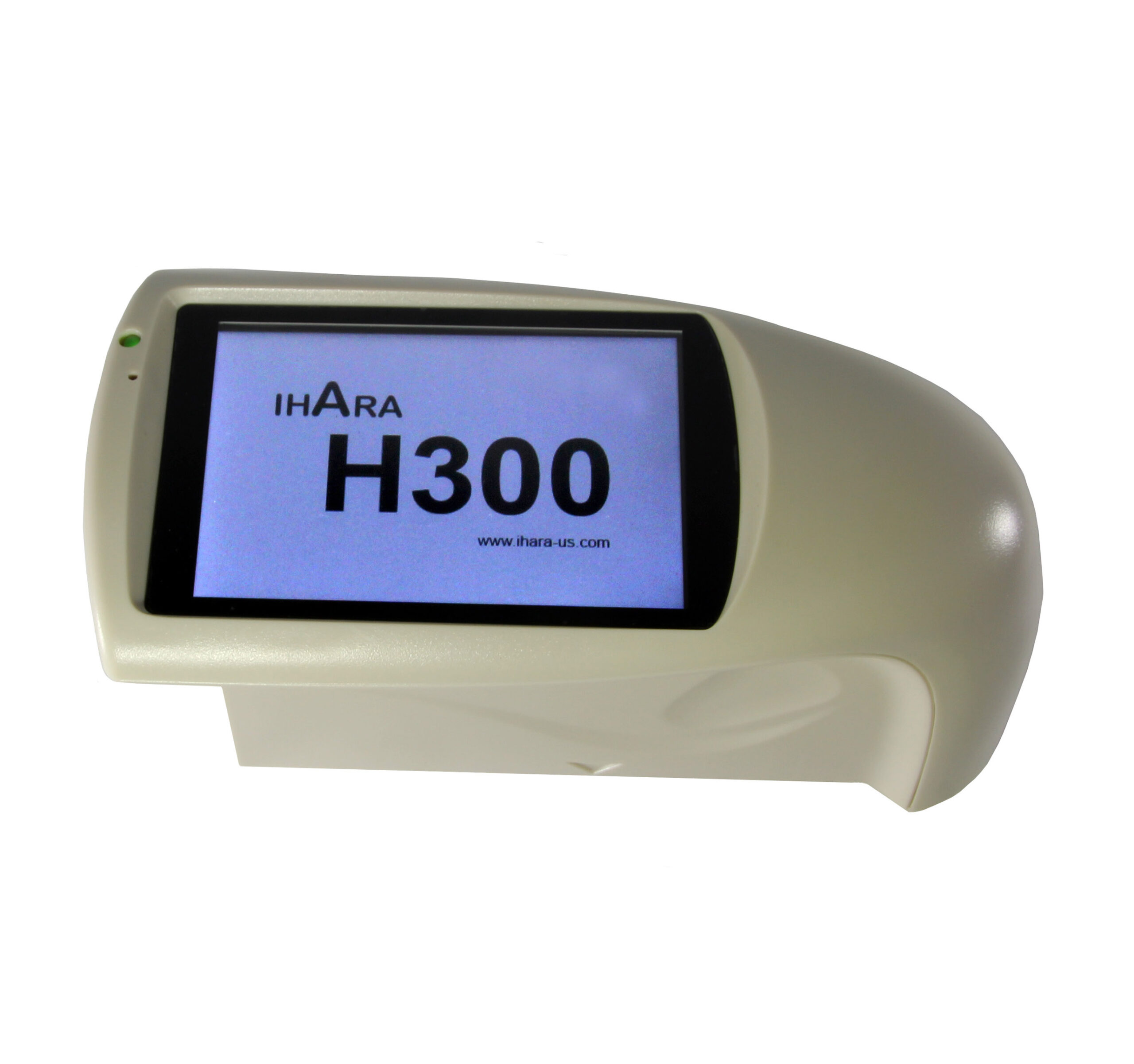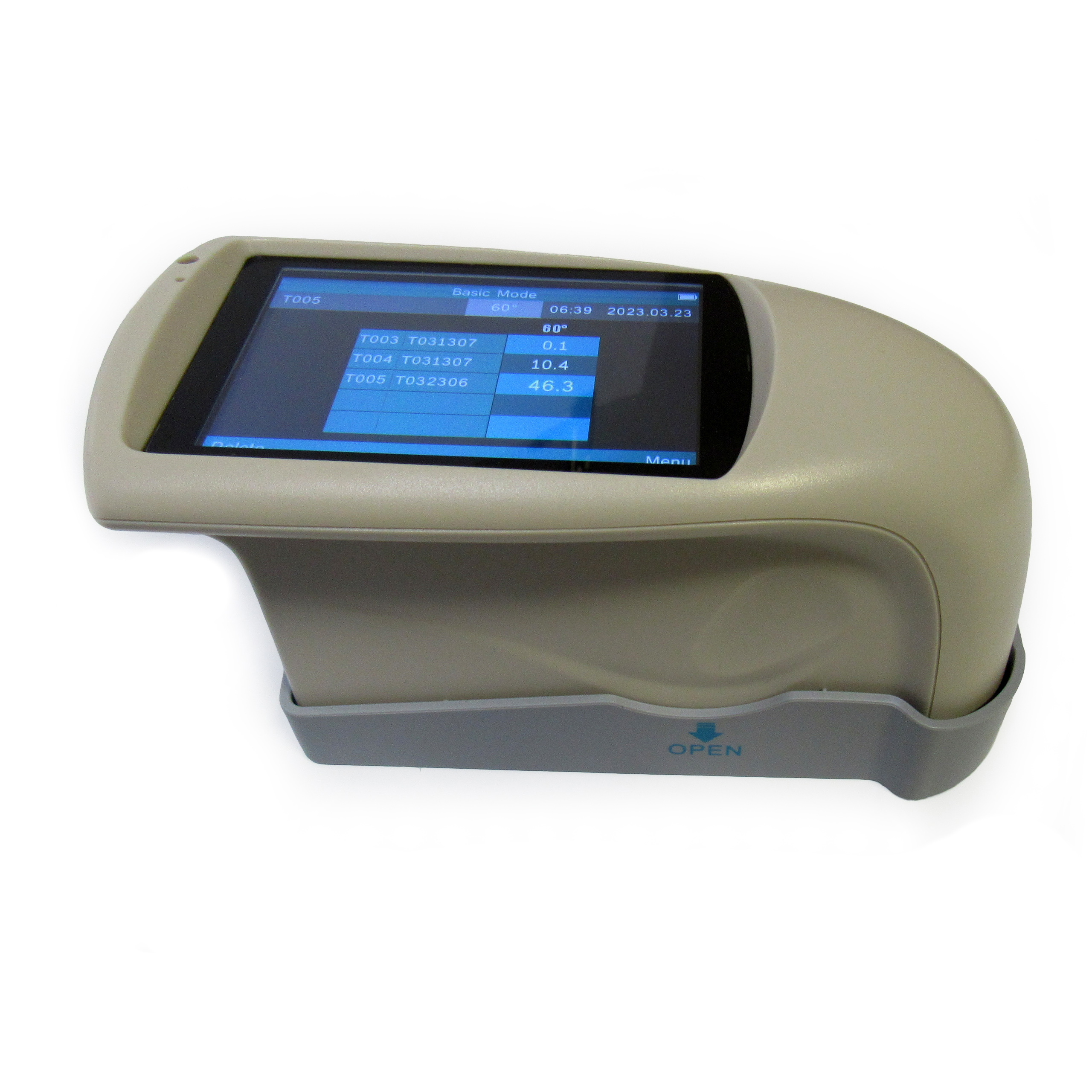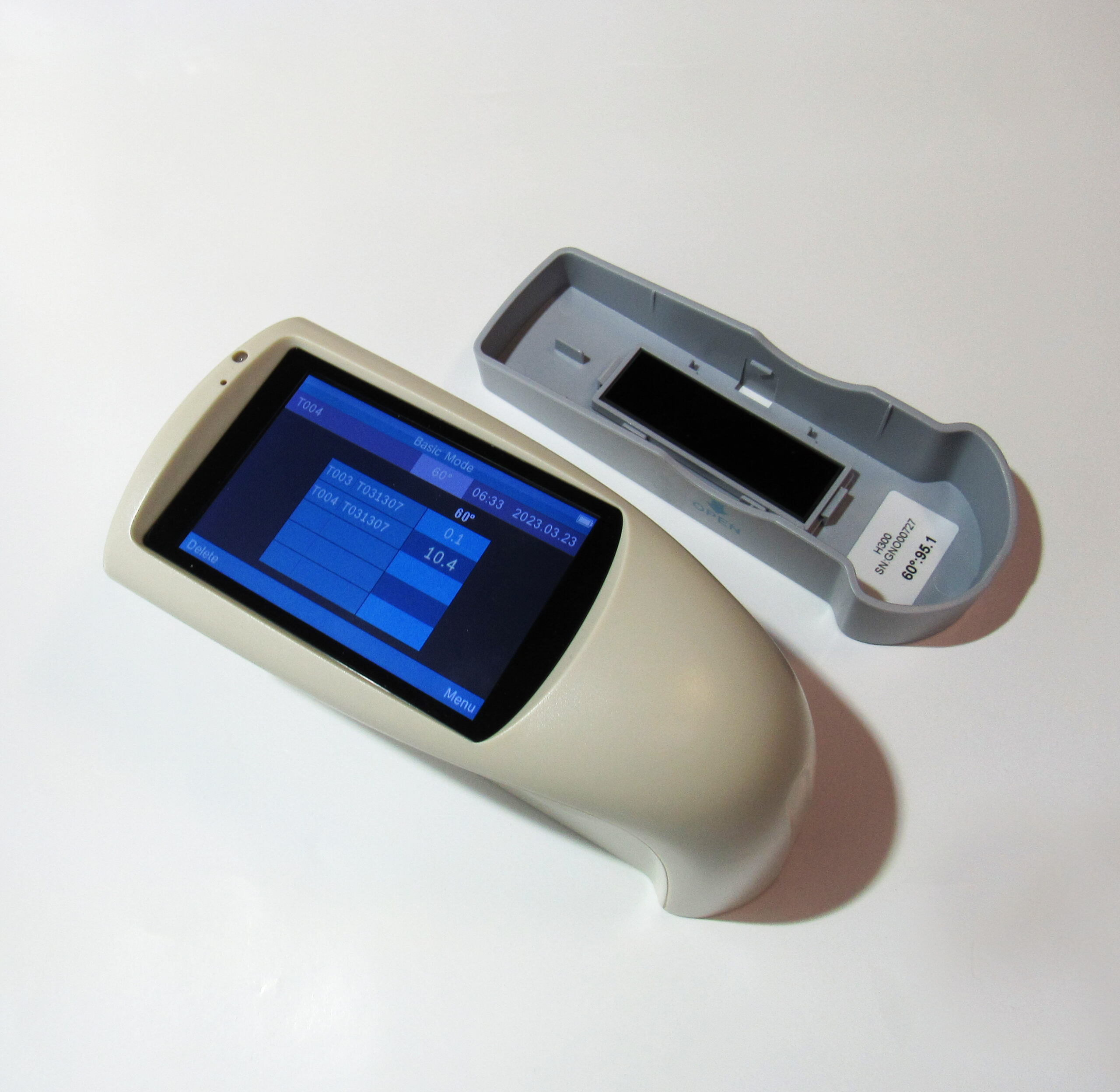H300 60° Gloss Meter
Categories
H300 60° Gloss Meter
This ergonomically portable handheld 60° degree gloss meter is versatile as well as easy to use. This instrument features a high contrast, back-lit, touchscreen LCD display with an encapsulated removable calibration reference.
The model H300 60° gloss meter conforms to numerous international standards, which includes: ASTM D523, ASTM D2457, GB/T 1381, GB/T 7706, GB/T 8807. It is manufactured according to ISO2813 and GB/T 9754.
This instrument could store up to 1,000 measurements with its internal memory. The data can be transmitted via USB cable.
Accessories:
Carrying case, manual, software CD, USB cable, calibration reference and AC adapter.
Standards & Applications:
| Angle/Degree | International standard | Primary Applications |
|
60° |
GB/T 8807 | Medium Gloss paint, ink, plastics, ceramics, marble; metallic material |
| GB/T 7706 | ||
| ASTM-D523 | ||
| ASTM-D2457 | ||
| GB/T 1381 |
Features / Measurements
Large bright touch screen LCD display
Conforms to most measurement standards
Internal memory stores up to 1,000 measurements
USB connection
Documentation
| Brochure |
Why use a gloss meter?
A gloss meter is a device used to measure the glossiness or shininess of a surface by quantifying the amount of light it reflects at a particular angle. In various manufacturing processes, gloss meters can play a crucial role in improving quality control during production. Here’s how:
- Consistency in Appearance: Gloss meters help maintain consistency in the appearance of finished products. By measuring the gloss level of each item, manufacturers can ensure that all products within a batch or production run have the same level of shininess, making them visually appealing and consistent.
- Detecting Defects and Irregularities: Gloss meters can identify defects, imperfections, or irregularities on the surface of products. Any inconsistencies in the gloss level may indicate flaws in the manufacturing process or issues with the material used. Early detection allows manufacturers to address the problems promptly, reducing the likelihood of producing defective items.
- Setting and Monitoring Quality Standards: Manufacturers can establish specific gloss level standards for their products based on customer preferences, industry norms, or internal quality criteria. Gloss meters provide objective measurements to ensure that products meet these predetermined standards consistently.
- Evaluating Surface Coatings: In industries where surface coatings are applied, such as automotive, furniture, or electronics, gloss meters are invaluable tools for assessing the quality of the coatings. By measuring the gloss before and after applying a coating, manufacturers can evaluate its impact on the product’s appearance and make adjustments if necessary.
- Enhancing Customer Satisfaction: Products with consistent gloss levels are more aesthetically pleasing to customers. By using gloss meters to maintain quality, manufacturers can increase customer satisfaction and build a reputation for delivering high-quality products.
- Data-Driven Decision Making: Gloss meters generate quantitative data that can be used for data analysis and process optimization. By tracking gloss measurements over time, manufacturers can identify trends and correlations, leading to data-driven decisions to improve production processes and product quality.
- Real-Time Monitoring: Modern gloss meters often provide real-time measurements, enabling operators to make immediate adjustments if any deviations are detected during the production process. This proactive approach minimizes the production of non-conforming items and reduces waste.
- Ensuring Compliance with Standards and Regulations: Some industries have specific gloss requirements defined by standards or regulations. Using gloss meters, manufacturers can verify compliance with these standards and avoid potential penalties or rejections during quality inspections.
In conclusion, gloss meters are powerful tools in quality control during production. They help manufacturers maintain consistent appearance, detect defects, set quality standards, evaluate coatings, enhance customer satisfaction, make data-driven decisions, monitor production in real-time, and ensure compliance with industry standards. By integrating gloss meters into their quality control processes, manufacturers can optimize production efficiency, reduce waste, and deliver high-quality products to their customers.
Product Specifications
- Measurement Angle
- 60°
- Measurement Range (GU)
- 0-10, 10-100, 100-1000
- Measuring Spot
- 9mm x 15mm
- Division Value (GU)
- 0.1
- Repeatability (GU)
- 0 – 10: ±0.1 10-100: ±0.2 100-10000: ±0.2%
- Reproducibility (GU)
- 0 – 10: ±0.2 10-100: ±0.5 100-10000: ±0.5%
- Measurement Standard
- Conforms with JJG696 first class gloss meter working requirement
- Chromaticity Corresponding
- CIE 1931(2°) under CIE C light source
- Errors
- ±1.5, ±1.5%
- Measuring Time
- 0.5s
- Dimensions
- 160mm(L) x 75mm(W) x 90mm(H)
- Weight
- 350g
- Language
- English, Chinese
- Battery
- 3.7V, 3,200mAh Li-ion Batter, >10,000 (within 8 hours)
- Operating Temperature
- 10℃~40℃
- Storage Temperature
- -20℃~50℃
- Relative Humidity
- Up to 85%, no moisture condensation
- Computer Output
- USB/RS-232
- Software
- GQC6 Quality Control Software with QC report printing functions.
- Data Storage
- Basic mode: 1,000, Statistical Mode: 5,000, Continuous mode: 5,000
- Standard Accessories
- Power adapter, USB cables, user manual, CD (Including QC software), and calibration reference
- Optional Accessories
- Miniature Printer






